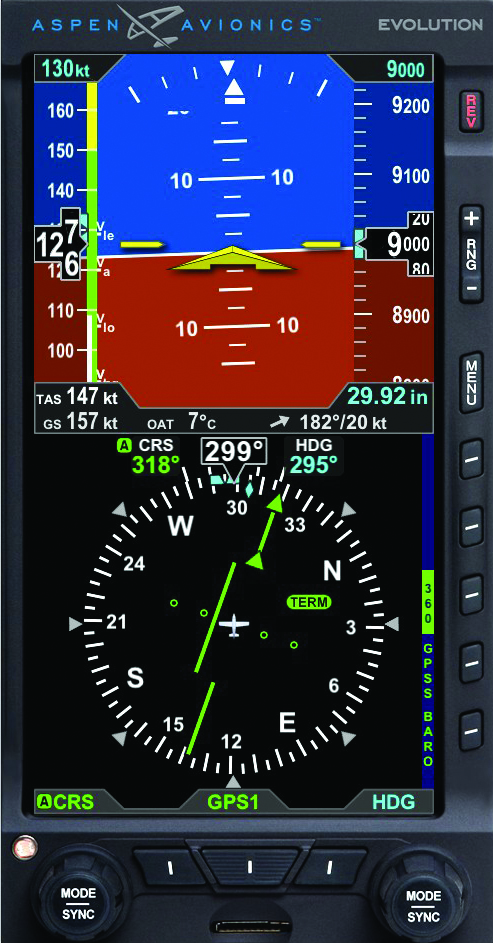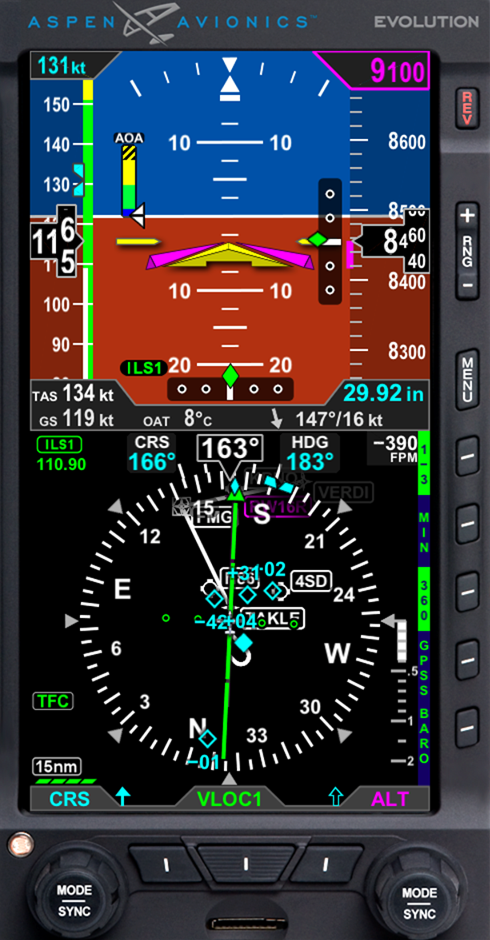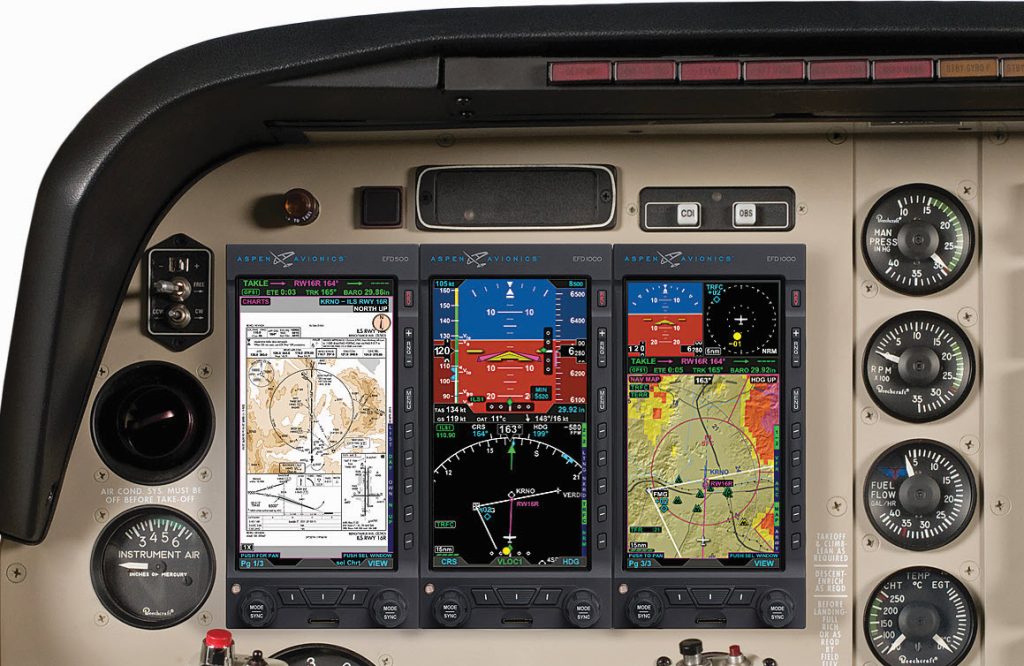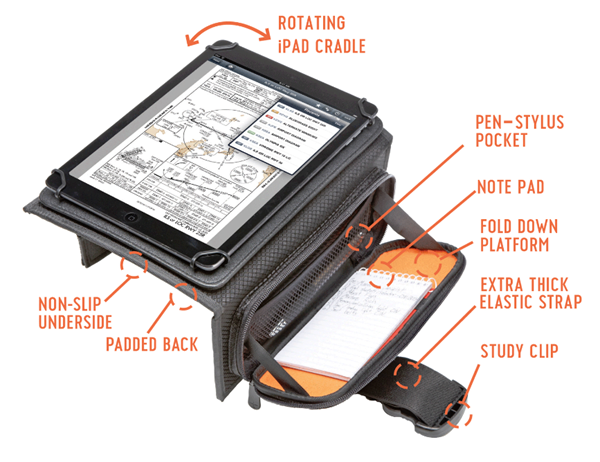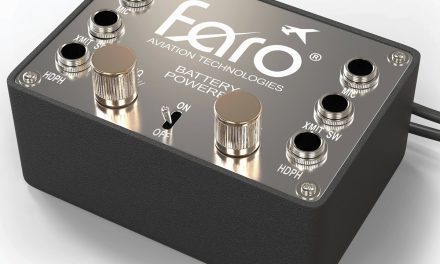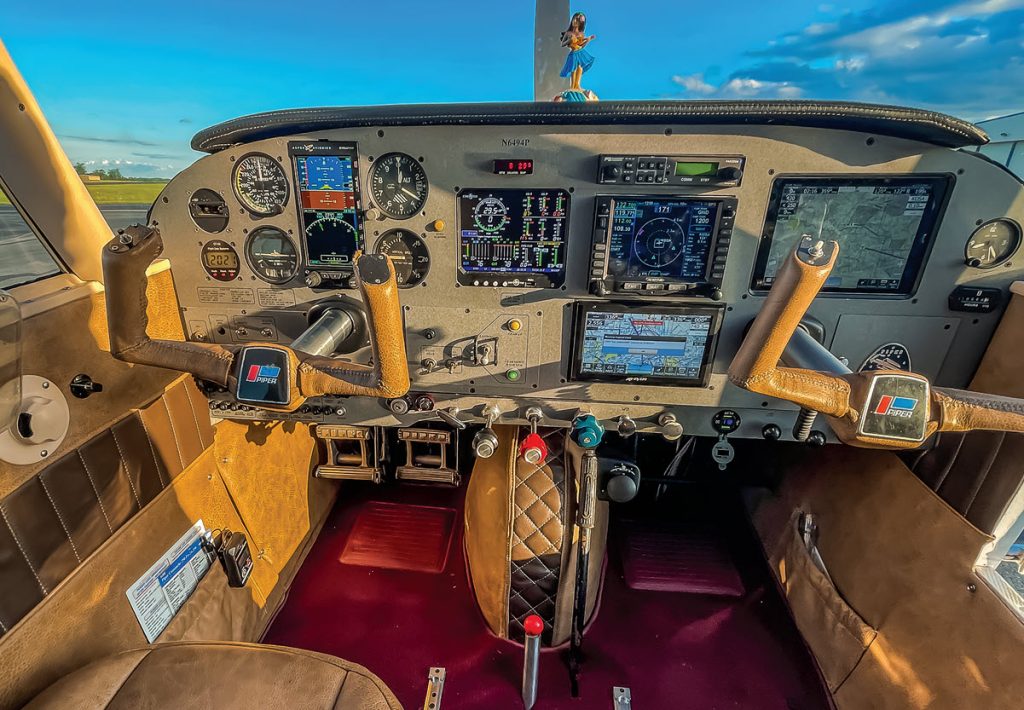
Last month, we talked about electronic flight instrument options. It’s a good option for a light IFR pilot with the goal of eliminating the risk of a vacuum pump or vacuum AI failure in IFR, and makes sense for the pilot with a long-term plan for the aircraft and the budget. Certainly, a true IFR pilot with flights “beyond light” can also benefit from EFI’s. However, when the flying gets heavier, there are other considerations when equipping a panel for that mission.
One example is the widespread use of the iPad with aviation software in aircraft today, both for light IFR and true IFR. In light IFR, the pilot uses the smart tablet as the primary moving map and as a tool to augment navigation and when equipped, the source of ADS-B WX and traffic. Likely, as a result of budget limitations, the tablet plays a bigger role in the light environment. It’s portable and vulnerable to overheating, limited by battery condition and often away from the pilot’s primary scan. In the true IFR environment, depending on a portable unit for information that is critical to the flight is risky. My philosophy is that all critical information in true IFR should be from a certified, panel mounted source. This is where big glass comes into play. Let’s talk about the options.
Aspen Avionics
I was “up in the air” as to whether to include the Aspens in the EFI article or here in big glass. The integrated approach by Aspen to include an AI and HSI with features into a single bezel and the option of using multiple EFD’s goes beyond the EFI concept so here it is. Aspen’s E5, designed and priced for the VFR and light market probably should have been included in last month’s article since the budget for adding EFIS in a light IFR panel upgrade is a part of the discussion.
Aspen E5 Primary Flight Display
The E5 puts ADAHRS technology in your aircraft for as little as $5,000 (plus install) and like all the Aspen options, does not require you to make a new panel ($4,000-$6,000). The E5 has a full HSI and battery backup. An optional ACU (+$900) allows the E5 to interface to older analog equipment and the optional EA100 autopilot adapter ($2,500) allows the E5 to replace the vacuum AI commonly used to drive older legacy autopilots. Expect 30-40 hours for installation. This puts the E5 with ACU installed in the $10,500 range.
Aspen EFD1000 Pro Max.
The Aspen Evolution EFD1000 first hit the market in 2008 and stood alone as a way to upgrade to EFIS and ADAHRS technology, again, without the need to build a new panel. It essentially rendered the mechanical HSI as obsolete for new installations. Since then, Aspen has continually upgraded the EFD with new displays, faster processors and pilot suggested features, and now the EFD1000 Pro Max includes synthetic vision at $10,000 plus installation including ACU. The Pro Max Plus adds an ADS-B interface and AOA for an additional $1,000. Aspen gives you the option of adding additional screens. Adding the MFD500 Max at $5,500 doubles your display area and includes charts and geo-referenced airport diagrams. The MFD1000 Max at $8,500 includes the same sensor set as in the EFD1000 and provides full MFD capability and full PFD backup. Add the MFD500 and the MFD1000 Max and you have the Aspen Evolution 2500 package at $21,000. The EA100 Autopilot interface (+$2,500) allows the EFD1000 to interface to legacy autopilots and eliminate the concern of a vacuum pump or AI failure.
Have a website login already? Log in and start reading now.
Never created a website login before? Find your Customer Number (it’s on your mailing label) and register here.
JOIN HERE
Still have questions? Contact us here.

